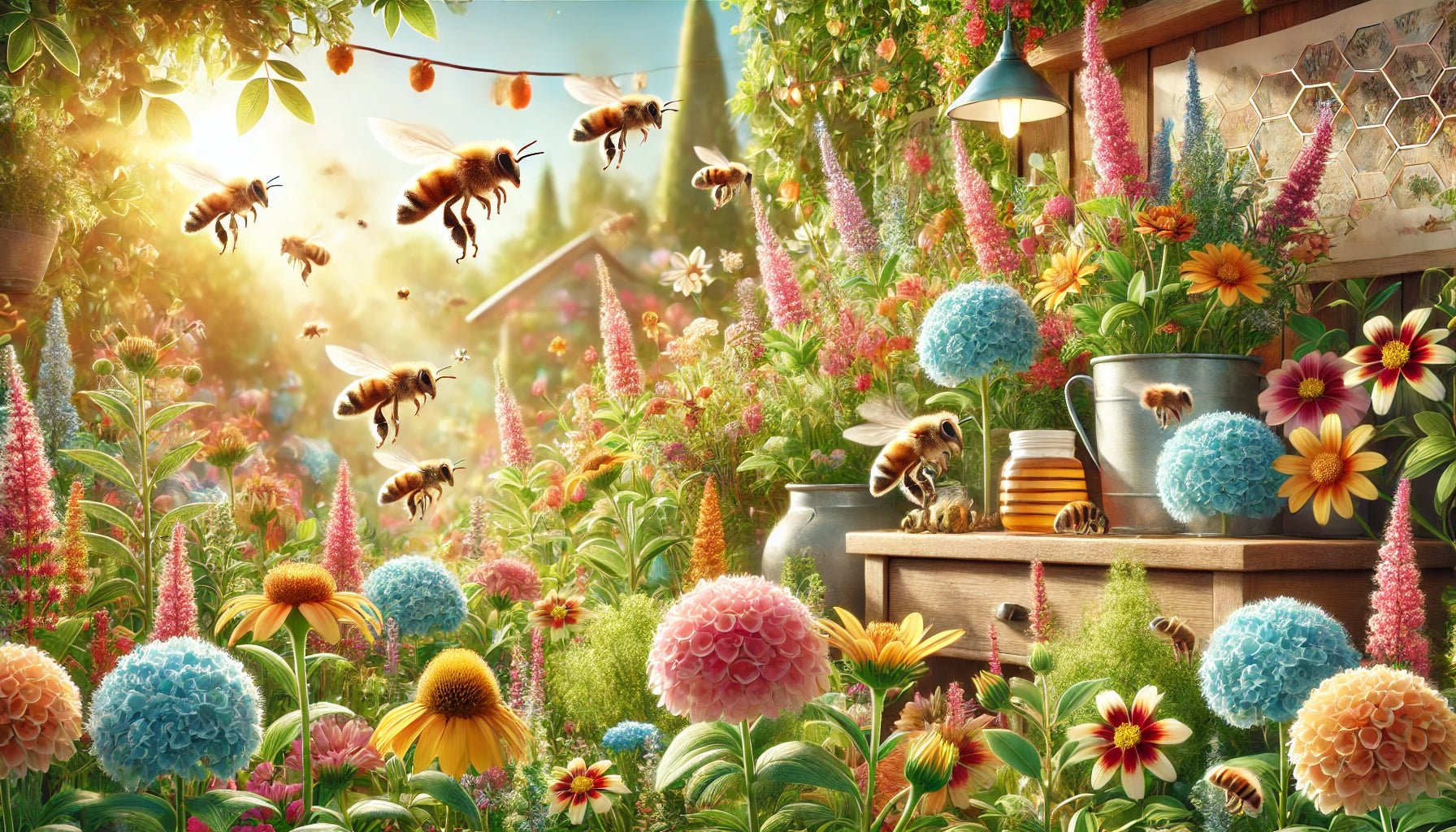If you've ever noticed a bee with blue wings fluttering in your garden, you're likely observing a mason bee. These gentle, solitary pollinators are known for their remarkable efficiency in pollination and unique appearance, with some species displaying striking blue hues on their bodies and wings.
In this guide, we’ll explore what makes these bees so special, their life cycle, and how they play an essential role in our ecosystem.
The Unique Appearance of Blue-Winged Mason Bees
Mason bees, particularly species like the blue mason bee (Osmia caerulescens), are recognized for their shiny, metallic bodies that often shimmer with blue or green hues. The bee wings of these pollinators give them a distinctive look, making them easy to spot in gardens. Despite their beauty, mason bees are incredibly efficient workers.
Unlike honeybees, which gather pollen in sacs, mason bees collect pollen on their bodies, spreading it to flowers more effectively..
While their unique appearance may catch your eye, these bees are not just beautiful. Their value as pollinators is immense, especially for fruit trees, wildflowers, and garden plants.
The Life Cycle of Mason Bees
The life cycle of bees, particularly mason bees, is vital to understanding their role in pollination. After emerging in early spring, female mason bees immediately begin collecting nectar and pollen to build nests. They prefer small cavities such as hollow stems, cracks in wood, or man-made bee houses. Unlike social bees, mason bees are solitary, meaning each female constructs her own nest.
The process is simple but effective. The female bee gathers food, lays an egg, and seals the nest with mud. The egg hatches into larvae, which feeds on the pollen and nectar provided. By midsummer, the larvae pupate and develop into adult bees, emerging the following spring to continue the cycle.
The Importance of Mason Bees in Pollination
Mason bees are some of the most efficient pollinators, capable of pollinating up to 100 times more plants than honeybees. Their unique method of collecting pollen makes them highly effective at transferring it between flowers, making them especially valuable for fruit trees like apples, cherries, and pears.This efficiency is one of the benefits of bees that gardeners and farmers alike appreciate.
In fact, the presence of mason bees can significantly increase crop yields, making them essential for agricultural success. This is why understanding how to start a bee farm or provide housing for bees like the mason bee can greatly benefit both your garden and the broader ecosystem.
Want to encourage mason bees to visit your garden? These simple steps can make your outdoor space a haven for these important pollinators:
- Provide Bee Houses: Mason bees prefer nesting in small cavities. You can attract them by installing a bee house made of wood or bamboo.
- Plant Early Blooming Flowers: Since mason bees are active in early spring, planting flowers like wildflowers and fruit trees will ensure they have plenty of food.
-
Offer Mud for Nesting: Mason bees use mud to seal their nests. A small mud patch near their nesting site will encourage them to stay.
. - Avoid Pesticides: Pesticides can harm mason bees. Use organic or natural methods for pest control in your garden.
By following these steps, you'll help support the life cycle of bees and contribute to a healthier environment.
Why Are Bees Like Mason Bees Vital to Agriculture?
The importance of mason bees and their role in agriculture cannot be overstated. These bees are critical for the pollination of many crops, especially fruit trees. Their ability to work in cooler weather or even light rain makes them more resilient than honeybees, ensuring that pollination continues even in less-than-ideal conditions.
Supporting mason bees in your garden not only helps your plants thrive but also supports biodiversity. The question of why honeybees and mason bees are so vital to agriculture is simple—they are foundational to maintaining our food supply, and without them, crop production would suffer significantly.
Create a Bee-Friendly Garden with Swarm Commander
Mason bees, with their blue wings and efficient pollination habits, are among nature’s most valuable assets. By providing them with a safe habitat and plenty of food sources, you can contribute to a healthier environment and enjoy a more productive garden. These bees may be small, but their impact on our world is immense.
Want to attract mason bees and other pollinators to your garden? Swarm Commander offers a range of products designed to support bees, ensuring your garden thrives with the help of nature’s best pollinators. Make your garden a buzzing success today with Swarm Commander!
Frequently Asked Questions About Mason Bees
Q1. What makes mason bees with blue wings special?
The blue mason bee is known for its metallic blue hue, which helps distinguish it from other species. These bees are efficient pollinators and play a crucial role in supporting plant life.
Q2. How do mason bees pollinate plants?
Mason bees gather pollen on their bodies rather than in sacs, which makes them highly effective at transferring pollen between flowers. This boosts pollination and increases crop yields.
Q3. What can I do to attract mason bees?
You can attract mason bees by providing housing (such as bee houses), planting early-blooming flowers, and offering a source of mud for nest-building.
Q4. Are mason bees aggressive?
No, mason bees are non-aggressive and rarely sting unless provoked. They are gentle pollinators that pose no threat to humans.
Q5. Why are mason bees important for agriculture?
Mason bees are vital pollinators, particularly for fruit trees and garden plants. Their efficiency in pollination makes them essential for food production and biodiversity.



